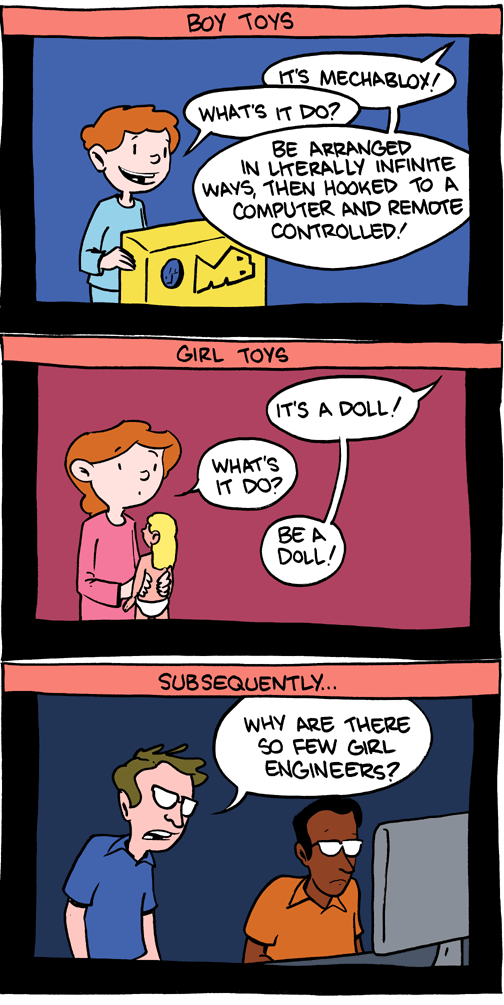The holiday gift season is winding down now, which is a big relief to me.
I even managed to avoid stepping foot into Toys R Us this year.
Why do I despise Toys R Us so much? Because when you walk in, the store
is neatly divided into the PINK half, and the black-and-blue half.
It drives me crazy how gender-segregated children's toys are these days.
This article about the toy aisles in Target is spot-on, if extremely snarky.
What gets me the most is the LEGO Friends thing. On the one hand,
I can get that LEGO wants to market to girls. On the other hand,
those LEGO Friends toys are not LEGOs anymore. You can't take them apart
and build an entirely new vehicle or building of your own design
and have fabulous adventures limited only by your imagination.
As Andrea Petri says in the article above,
"Pretty much everything in the pink aisle was designed in a way that
limited the number of stories you could tell with it. In the blue
aisle, accessories vary. There’s a Batman with a submarine. There’s a
ninja with a castle. Not in the pink aisle. Everybody just had
hairbrushes."
Goldie Blox seems like a great way
to combat some of this, but then again, why should you need a special
building toy that's marketed just at girls?
The answer, I think, is that most girls are stuck in the pink aisle.
Kids are smart, and learn gender roles at a very young age.
It is clear to them that pink-and-purple toys are for girls, and
everything else is for boys.
I know so many parents who insist that they tried to dissuade
their daughters from liking pink, but failed anyway.
But it's unlikely that the girls just inherently liked pink, since
pink for girl is
purely a socialogical convention.
You might say that this child is a "girly-girl" or that child is
"all boy," but how much of that is just a result of the marketing
that is directed to them? How much of that is just the positive
feedback loop of reinforcing their interests in the items
that are gender-correct for them, while ignoring everytime
he picks up a doll or she throws a ball?
Why am I so concerned about girls' toys, especially since my kids are both
boys? It's because by limiting girls to a certain category of toys,
you limit their imaginations and skill development.* By putting together
and taking apart LEGOs, you might learn some basic geometry and
engineering. By pretending to be a superhero, you might learn how
to take charge and be a leader.
If their toys are only about princesses and brushing their hair and makeup,
then no wonder that by middle school girls lose interest in
science and math, even though their achievement remains as good as or better
than boys. So I do support toys like Goldie Blox that both appeal
to the girly-girls and develop their creativity.
*I also think that having boys play with dolls and toy kitchens
instead of nerf guns and cars
might make them more empathetic and allow them to develop a wider
emotional range, but that's a topic for a different post.










